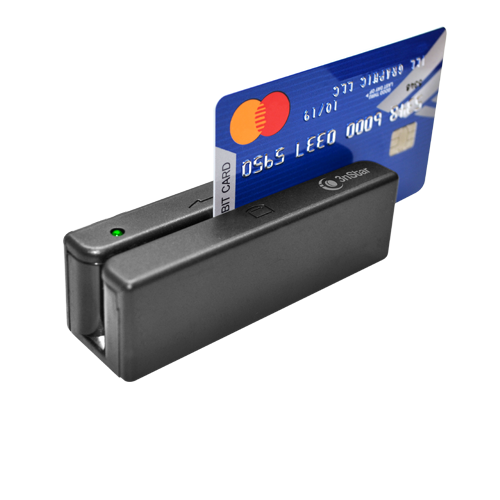

Magnetic Stripe Reader Usb
A magnetic stripe reader comes in handy when you will be frequently entering credit cards without storing that information in your database, like processing a high volume of retail transactions for non-members.
Android Magnetic Stripe Reader
Before going any further, read the document I've attached to this step, 'A Day in the Life of a Flux Reversal' by Count Zero. This document is pretty much the bible on how magnetic stripes work, and you need to understand how data is encoded on to them and the basic formatting of the tracks on a given magnetic stripe card. I'm going to go get a cup of coffee; have it read by the time I get back.
.......
Finished? Good.
As you will have learned from your reading, data is encoded on to magnetic stripes by means of magnetic flux reversal in the segments on the stripe. When the card is swiped past the card reader, the changing magnetic field of the passing flux reversals induce a current in the reader element, which is then decoded into binary bits, and the original data stored on the magnetic stripe is reconstructed.
So, in order to emulate a particular magnetic stripe, all we need to do is find a way to recreate the pattern of the way its magnetic field changes as it's being swiped past the reader. How are we going to do this? With an electromagnet!
As you may already know, an electromagnet is basically just a solenoid (coil of wire). When an electric current is passed through the coil, a magnetic field is created. By turning the electromagnet on and off rapidly, we can replicate the changing magnetic field of a magnetic stripe swipe.
The final piece of this puzzle is how to control the electromagnet. Well, we're trying to recreate a particular waveform of current through the solenoid in order to create a particular waveform of magnetism. What's a common way of storing waveforms and converting them to electric current? Sound files! So, all we have to do is encode the highs and lows representing the desired flux reversal pattern into a .wav file and play it back on an iPod or similar music player through the solenoid.
Music players designed to play sound through headphones do not produce enough current to drive the electromagnet in this project, so we will also have to construct a basic amplifier that the signal must be passed through before going to the electromagnet.